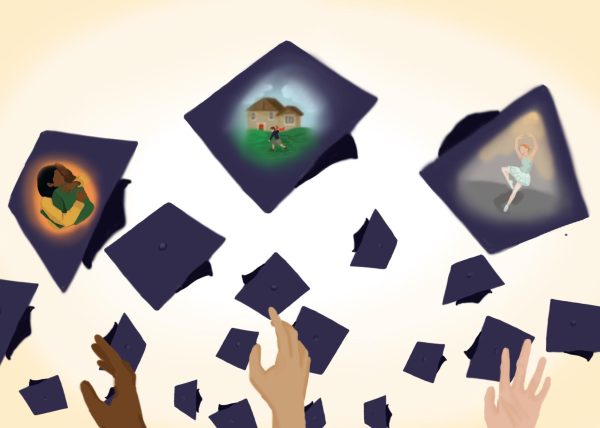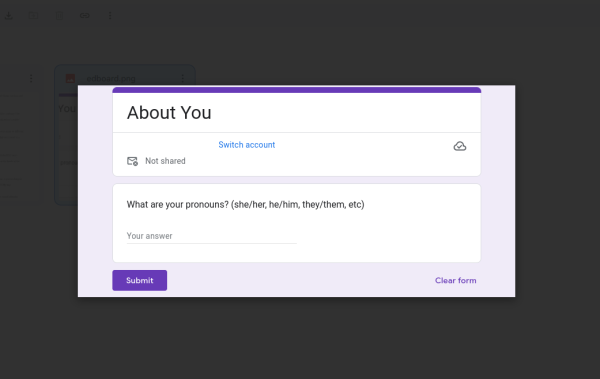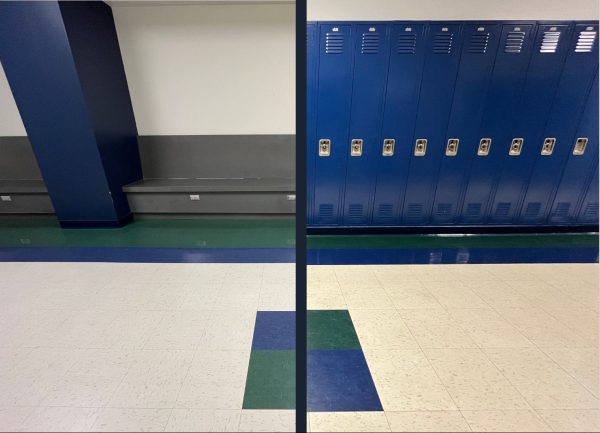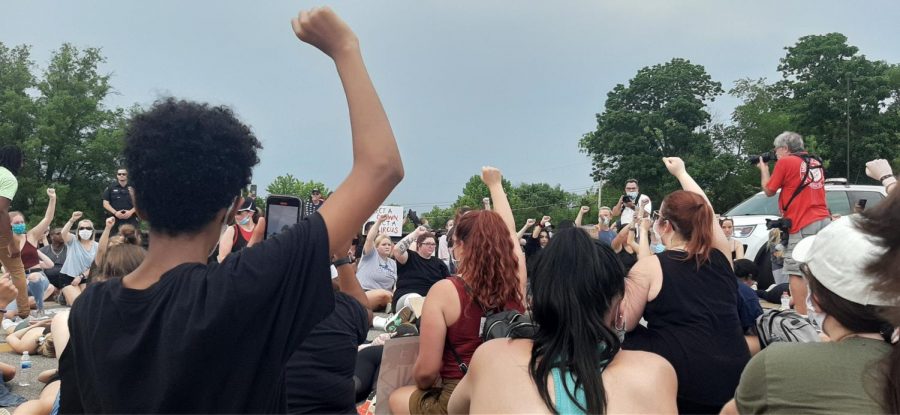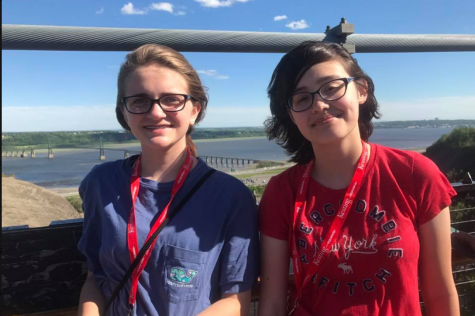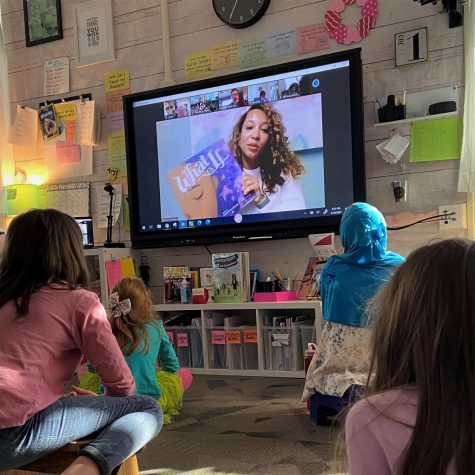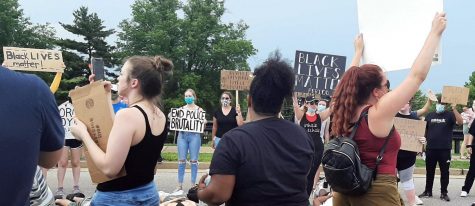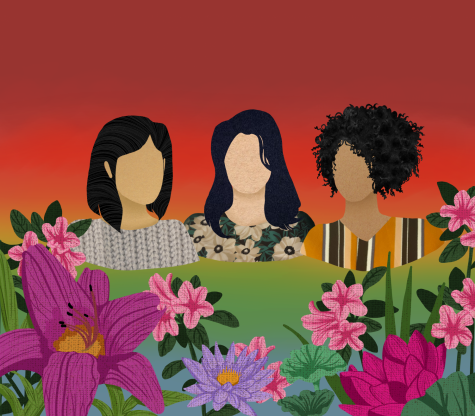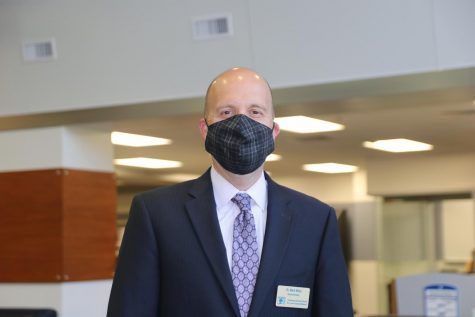Perspective: In the Wake of George Floyd’s Death, How Do We Create Change?
Media by Lauren Pickett
In a protest for George Floyd Wednesday, June 3, a large crowd sat in a moment of silence for 8 minutes and 46 seconds to resemble the duration of time former Minneapolis police officer, Derek Chauvin, knelt on Floyd’s neck.
The black community is under siege by two national sicknesses—COVID-19 and racism—and a recent rebellion condemning racial injustice and police brutality shows the country is at its tipping point.
A video captured a modern-day lynching: George Floyd, an unarmed black man, was killed by a former white Minneapolis police officer, Derek Chauvin, who knelt on Floyd’s neck for 8 minutes and 46 seconds during an arrest Monday, May 25. Chauvin and the three officers who ignored Floyd’s pleas have been charged in connection to his death.
This blatant disregard for black life, from the nonchalant demeanor of Chauvin to the lack of intervention by the surrounding officers, was enhanced by the deaths of Ahmaud Arbery, Breonna Taylor, Tony McDade and an almost endless list of other black victims of police.
Sadly, society was more complacent with the state of racism in the nation when news headlines read “African Americans Disproportionately ‘Dying’ or ‘Unemployed’ from COVID-19” for months than when headlines read “graphic video,” “riots” or “looting” for a week.
Frustratingly, the filmed death of Floyd was needed to show the U.S. failed concerning policing reform and systemic racism. His murder and the disproportionate effects of COVID-19 onto blacks represents the grave status of racism structurally, economically and institutionally in its rawest form.
From slavery to the disparities in current killings of black people by police, the U.S. still mirrors more than 400 years of exploitation, oppression and gruesome injustice.
The reactants—the current disinvestment and devaluation in black communities, inequities in healthcare, living conditions, employment, education, incarceration etc.—catalyzed by the pandemic and the death of Floyd produced justified fear and anger.
Overwhelming emotions caused diverse groups nationwide to take to the streets to express their all too familiar demand for change and respect, and there is no halt in sight.
What Methods Will Create Substantial Change?
A heated debate ensued about how to make long-lasting change regarding the effectiveness of nonviolent protesting or uprising. People also questioned the effectiveness of addressing police solely or all systemic issues affecting the black community.
Although uprisings drew needed attention, they are socially destructive and self-defeating. Riots can damage the image and message of this minority-focused issue. I believe we must sustainably address issues with police as well as the entirety of the criminal justice system, racially discriminate policies, and other institutions negatively impacting blacks.
Without the intention of demonizing black anger and frustration, I, as a black woman, cannot condone riots. They act as the lit match in a forest that becomes a wildfire—there’s no controlling the way the wind blows and intensifies a fire, or in this case, which stores, individuals, social centers, neighborhoods or small businesses are hurt or lose essential resources and jobs.
Civil unrest accounts for significantly lesser action in comparison to the nonviolent protests, but they were the focus of news coverage. Especially during nightfall, rioters are often different people with different agendas other than those of a previously organized protest, including “opportunistic” looters and white agitators.
Although uprisings signify a lack of compliance with oppression under a broken system, the messages behind nonviolent protests can be convoluted by the violence instead of the atrocity of another unarmed black man killed by police.
How Race Is Correlated with Demonstration Effectiveness
The media’s criminalization of blacks is inevitable. Displaying footage largely of blacks in uprisings adds fuel to the President’s racially biased references of protesters as “thugs” who need “law & order.” This shifts attention away from the excessive use of the armed forces and militarized police, who incite violence and hurt protesters, bystanders and journalists.
Current uprisings resemble similar catalysts of the 2014 Ferguson Riots, 1992 Los Angeles Riots or 1980 Miami Riots. However, their call for justice contrasts that of white supremacist violence such as the 1906 Atlanta Race Riots, 1919 Red Summer or 1921 Tulsa Race Massacre. Historically, black people were not the perpetrators of violence and only criminalizing the black response is unjust.
Tragically, racism has prevailed through tactics of nonviolence, violence and civil disobedience. Sufficient change requires dedication and patience to dismantle this painful cycle of unjust loss and societal forgetfulness.
From movements like the 43-year resistance against South African Apartheid to the seven-month Freedom Rides, nonviolent campaigns have historically been more successful than armed campaigns in achieving the same political goals against similar opponents.
Ultimately, I cannot denounce riots without also condemning its causes—a lack of progress and justice. To prevent uprisings, we must ask the questions: What injustices or inequities compounded this unrest? Why do so many people feel marginalized or insecure in their lives, income and humanity due to their race or living circumstances?
We must scale back our overemphasis on the power of the demonstration, whether it be with signs or flammable objects, to be the ultimate attention-gatherer and change-maker for eradicating the racism ingrained in society and in the injustices surrounding Floyd’s death.
Processing Floyd’s Death As A Young Black Woman
In a predominantly white area among surprisingly large crowds, I marched in protests for George Floyd Wednesday, June 3, and Thursday, June 11. Organizing in areas least affected by police brutality is more important than a superficial social media post. Addressing racism should not mimic a short-lived trend to be revisited every few years.
Being in a protest gives me a unique rush. Seeing the raw emotion and unity, in such a grand fashion is addictive and energizing. When I left, I didn’t want to come down from this high when I was filled with anger and exhaustion.
Nonviolent advocacy clearly displays our agenda and grievances. It inspires future leaders to educate themselves, acknowledge white privilege and cultivate new ways to further the message and find fault within their own mindsets.
Seeing this repetition in instances of brutal murder by police, I am outraged, disgusted and heartbroken. It is tearfully painful to be reminded my blackness lacks value and respect when “black lives matter” isn’t taken to heart. As acts of racial profiling, microinsults and microassaults shaped my upbringing, it makes this situation more enraging and scary.
As a black young girl, I am outraged, disgusted, and heartbroken. It is tearfully painful to be reminded my blackness lacks value and respect. As acts of racial profiling, microinsults and microassaults shaped my upbringing, it makes this situation more enraging and scary. — Lauren Pickett
Race is an inescapable factor in people’s consideration of my worth, ability and character. Infinite limitations are always attributed to my existence. Racism extends beyond this senseless killing to the underlying racism in daily life, allowing for stifled opportunities. We must ask, how many black people are my doctors or executives? How many are in my AP classes or internship programs?
As the daughter of two retired, black police officers, I know officers decide their own style of policing. My mother always stood up to anyone acting corruptly or using excessive force, and she, as well as others, don’t represent the entirety of the police culture emitting from the egregious officers at the scene of Floyd’s death.
However, she knows the vast issues with the justice system and police from implicit bias to racial profiling. We both want to address why her department is known as one of the largest city departments killing black men at higher rates than the U.S. murder rate. We recognize blacks are three times as likely than white people to be killed by police, and there are weaknesses within laws and systems creating a lack of any accountability.
How Will We Achieve ‘Justice’ From Here?
Floyd’s death will not be the last of an unarmed black man by police on film. Moving forward, we must focus on the social, economic and political inequalities adding to civil unrest by investing programs and services to support black communities and businesses.
We must address the everyday people who contribute to these injustices from in stores to parks to boardrooms, and encourage white people to check their privilege and discomfort to become good allies and antiracists.
In this pivotal movement, bystanders will embody the mindset of the three officers who ignored Floyd and his sympathizers, and black people will continue to embody Floyd’s anguish under the knee of biased or racist individuals, similar to Chauvin’s physical oppression.
Demanding specific police and justice system reforms, standardizing national policy implementation, outlawing racial profiling and excessive force, demilitarizing the police and challenging their legal immunity needs to be a top priority.
The battle for racial equity and civil rights is another never-ending U.S. war, and we must act not with a fleeting fire of outrage but with a slow simmer of action, pressuring officials and institutions at all levels of government for change through protesting, organizing, voting, donating, petitioning and educating.
Your donation will support the student journalists of Marquette High School. Your contribution will allow us to purchase equipment and cover our annual website hosting costs. You may become a PATRON by making a donation at one of these levels: White/$30, Green/$50, Blue/$100. Patron names will be published in the print newsmagazine, on the website and once per quarter on our social media accounts.
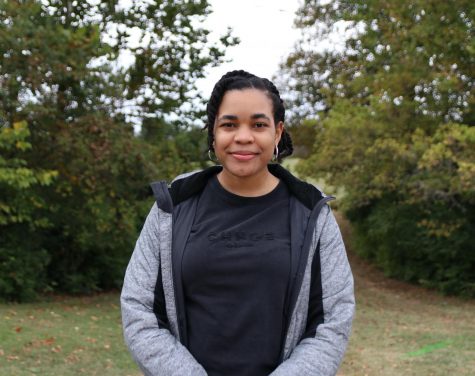
Lauren Pickett, senior, is the In-Depth Editor for the MHS Messenger. This is her second full year on staff. Also, Lauren participates in two other activities:...



